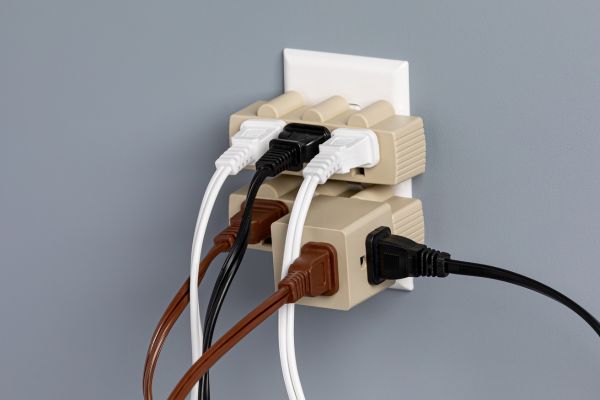In today’s fast-paced world, technology is advancing at lightning speed, yet many homes still rely on electrical systems designed decades ago. One crucial aspect often overlooked is the condition of electrical outlets. Upgrading outdated electrical outlets is not just about convenience; it’s about ensuring safety, improving energy efficiency, and keeping pace with modern living standards. If your home has outlets that look worn, are loose, or lack modern safety features, it may be time to consider an upgrade.
Why Upgrading Outdated Electrical Outlets Is Essential
Outdated electrical outlets pose significant risks to both property and personal safety. Older outlets were not designed to handle the power demands of today’s electronics and appliances. With smartphones, tablets, smart TVs, and kitchen gadgets filling our homes, the electrical load has increased substantially. Using outdated outlets can lead to overheating, sparks, or even electrical fires.
Homes built before the 1970s often have two-prong outlets, which lack grounding. Grounding is vital because it directs excess electricity safely into the ground, reducing the risk of shocks. Upgrading these outlets to modern three-prong versions or ground fault circuit interrupter (GFCI) outlets is a critical safety improvement.
Recognizing the Signs of Outdated Outlets
Many homeowners don’t realize their outlets are outdated until they experience problems. Signs to watch for include discoloration, frequent tripping of circuit breakers, or appliances that do not work properly when plugged in. If you notice a burning smell or see scorch marks around outlets, this is a clear warning sign that demands immediate attention.
Flickering lights and buzzing sounds from outlets are also indicators that your electrical system is struggling to cope with current demands. These issues often point to underlying problems that can only be resolved by upgrading outdated electrical outlets.
The Benefits of Modern Electrical Outlets
Modern electrical outlets offer advanced safety and convenience features that were not available in older designs. GFCI outlets, for instance, are designed to protect against electric shock in wet areas such as kitchens and bathrooms. They automatically cut power if they detect an imbalance in the electrical flow, preventing potentially fatal accidents.
Another innovation is the arc fault circuit interrupter (AFCI) outlet. AFCIs are designed to detect dangerous electrical arcs that can lead to fires and shut off power before damage occurs. Installing these in bedrooms and living areas greatly enhances safety.
For tech-savvy households, USB outlets are becoming increasingly popular. These outlets allow you to charge devices directly without the need for bulky adapters, reducing clutter and improving efficiency.
The Process of Upgrading Outdated Electrical Outlets
Upgrading your electrical outlets should always be done by a licensed electrician. The process begins with a thorough inspection of your home’s electrical system to determine the extent of the upgrades required. In many cases, updating outlets involves more than simply replacing the faceplates. Wiring may need to be updated to meet current electrical codes and handle modern loads safely.
During the upgrade, your electrician may recommend additional improvements such as installing tamper-resistant outlets. These are especially important in homes with young children as they prevent foreign objects from being inserted, reducing the risk of shocks and injuries.
Ensuring Compliance with Electrical Codes
Electrical codes are regularly updated to reflect advances in safety standards and technology. Upgrading outdated electrical outlets ensures your home complies with these codes, which is particularly important if you plan to sell your property. Homebuyers today are increasingly conscious of electrical safety and may request inspections before finalizing a purchase.
Complying with the latest electrical codes not only enhances safety but also adds value to your home. It provides peace of mind to potential buyers knowing that the electrical system is modern, efficient, and capable of supporting their needs.
When Should You Upgrade Electrical Outlets?
The best time to consider upgrading is during a home renovation or when adding new appliances that demand higher power. However, you should not wait for a renovation to address safety concerns. If your home has outlets more than 20 years old, it’s wise to schedule an inspection and upgrade as necessary.
Power surges from lightning strikes or grid issues can damage sensitive electronics connected to outdated outlets. Installing surge-protected outlets offers an added layer of protection and is highly recommended in areas prone to storms.
Future-Proofing Your Home’s Electrical System
Technology will continue to evolve, and your home’s electrical system should keep pace. Upgrading outdated electrical outlets is an investment in both safety and convenience. With smart home devices becoming standard, modern outlets can integrate seamlessly with these systems, ensuring your home remains functional and efficient for years to come.
Thinking ahead also means considering energy efficiency. Modern outlets are designed to minimize energy waste, which can help lower your utility bills. Over time, this investment pays off both in safety and savings.
The Final Word on Upgrading Outdated Electrical Outlets
Upgrading outdated electrical outlets is far more than a cosmetic improvement. It’s a critical step in safeguarding your home, protecting your loved ones, and keeping up with the demands of modern life. From preventing electrical fires to accommodating high-tech gadgets, modern outlets provide the functionality and safety features every home deserves.
If your home still has outlets from a bygone era, don’t wait for warning signs to appear. Contact a licensed electrician today to discuss your options. Making this upgrade now ensures a safer, smarter, and more efficient living space for years to come.




